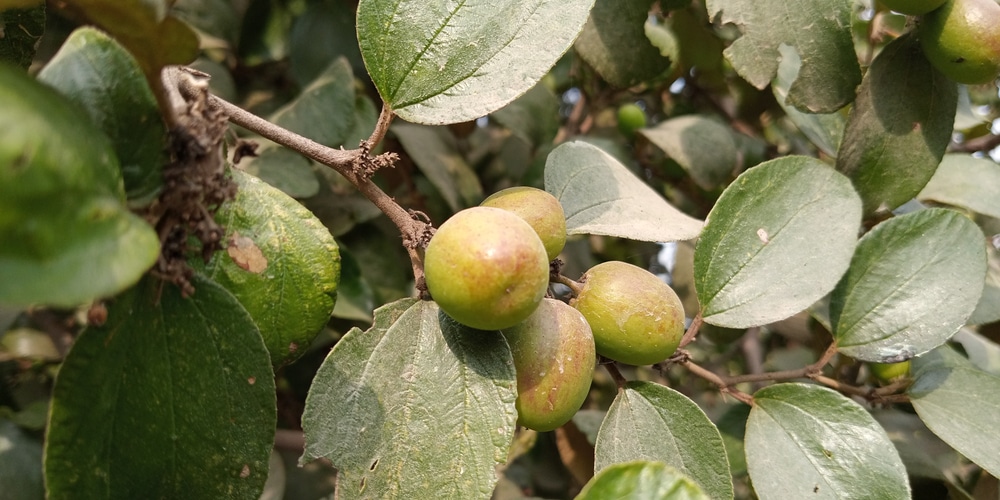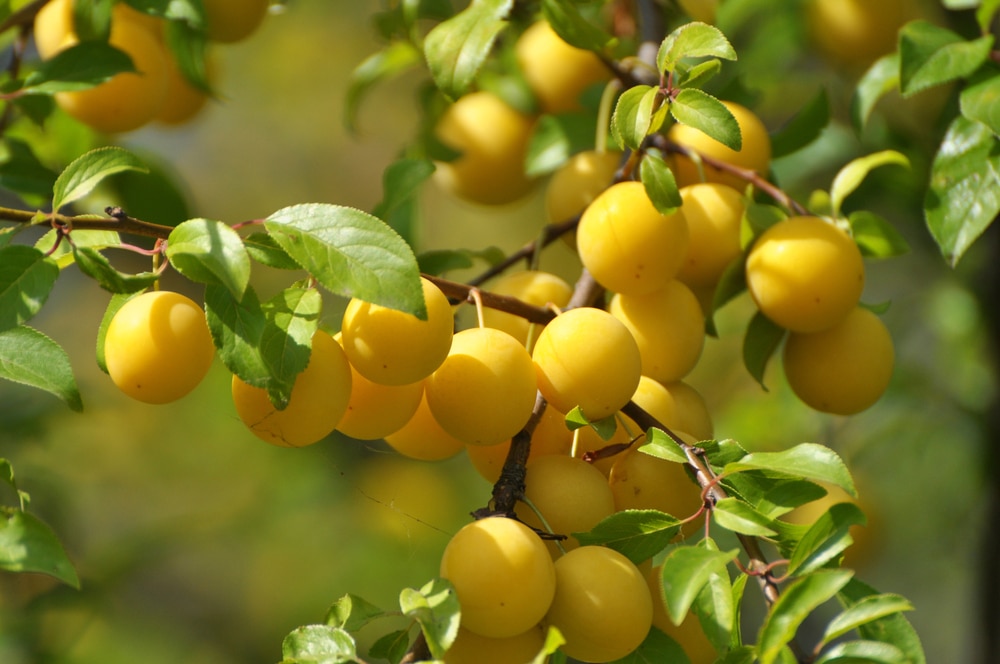There are about 40 plum tree types, many of which produce yellow plums. Millions of tons of yellow plums are grown annually across the world. Let’s look at yellow plum tree identification, we’ll discuss what to look for in the foliage, bark, branches, and fruit.
Yellow plum tree identification

Plums were grown in ancient human civilizations and are one of the oldest fruits known to man. If you’re not sure whether or not a tree is a yellow plum tree, here are some key things to look for:
Flowers
- Yellow plum trees bloom in the early spring with white or pink flowers.
- The flowers are attractive and make a great addition to any yard.
- Once the flowers have been pollinated, they will begin to turn into fruit.
Fruit
- The most obvious way to identify the tree is by its fruit. The fruit of the yellow plum tree is, as you might expect, yellow.
- The fruit is spherical or oval in shape and has smooth skin.
- The fruit’s flesh is juicy and sweet, with a large seed in the center. Yellow plums often have a tart aftertaste which is caused by the bitter skin.
- Most varieties of yellow plum trees produce fruit in the late summer or early fall.
Leaves
- The leaves of the yellow plum tree are simple and elongated.
- They grow in pairs along the stem, with one leaf on each side.
- The foliage is oblong or oval in shape and some varieties have serrated edges.
- The top of the leaves are glossy green, while the bottom is a paler green.
Bark and branches
- The bark of the yellow plum tree is smooth with a light gray or brown color.
- The branches are also relatively thin and flexible.
If you see a tree with these characteristics, chances are good that it’s a yellow plum tree, although trees that produce purple fruit also have very similar characteristics.
If you’re still unsure what kind of tree you’re looking at, you can always consult with a local expert or take a sample of the leaves or fruit to your local cooperative extension office for identification.
Common varieties of yellow plum trees
There are many varieties of plums that produce yellow fruit. Trees such as yellow honey, golden large, egg Yellow, or Morning can be added to your home orchard.
Mirabelle is another popular variety of plum that has yellow fruit. These trees originate from France and only grow in certain areas. It’s illegal to grow Mirabelle in many countries.
These trees are all self-fertile, meaning they do not need another plum tree nearby in order to produce fruit. This means you can add a single tree to your yard and still grow fruit.
Final thoughts
Now that you know how to identify a yellow plum tree, you may like to consider growing one in your yard. This will allow you and your family to enjoy the delicious fruit these trees produce annually!
